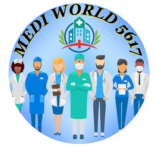MEDICAL TRANSCRIPT DEPARTMENTS

The transcription department in a hospital plays a crucial role in converting verbal medical information into accurate written documents. This department ensures that patient records are properly documented, which is essential for continuity of care, legal compliance, and efficient hospital operations. Below is a detailed overview of the transcription department in hospitals, including its roles, responsibilities, staff, and career opportunities.
What is a Hospital Transcription Department?
The transcription department is responsible for converting audio recordings made by doctors, surgeons, and other healthcare providers into written formats. These transcriptions become part of the patient’s medical records.
Key Functions of the Transcription Department
Transcription of Medical Reports:
- Convert verbal dictations into written reports such as discharge summaries, operation notes, consultation notes, and diagnostic test results.
Maintaining Accuracy:
- Ensure the transcription is accurate, with correct medical terminology and spelling.
- Cross-check for errors to avoid misinterpretation.
Formatting Medical Documents:
- Standardize reports according to hospital policies or regulatory guidelines.
Record Management:
- Organize and store transcribed documents securely in the hospital’s electronic medical records (EMR) system.
Compliance with Privacy Laws:
- Ensure all transcription activities adhere to patient confidentiality standards, such as HIPAA (for hospitals following U.S. regulations).
Collaboration with Healthcare Staff:
- Work closely with doctors and nurses to clarify unclear dictations or resolve ambiguities in reports.
Staff Roles in the Transcription Department
Medical Transcriptionist (MT):
- Primary role responsible for transcribing dictated medical recordings.
- Ensures documents are accurate and free of errors.
Editor/Proofreader:
- Reviews transcriptions for accuracy and corrects any errors in medical terms, grammar, or formatting.
- Compares transcriptions with original audio recordings for quality assurance.
Lead Transcriptionist:
- Supervises transcriptionists and ensures department efficiency.
- Assigns tasks and monitors the progress of transcription work.
Quality Analyst:
- Conducts quality audits on transcribed reports to maintain high standards.
- Provides feedback to transcriptionists to improve their performance.
Manager/Coordinator:
- Oversees the transcription department and ensures compliance with hospital policies.
- Coordinates with other departments for efficient report handling.
Speech Recognition Editor:
- Reviews and edits documents created by voice recognition software to correct errors and improve accuracy.
Types of Documents Handled by the Transcription Department
- Patient histories
- Physical examination reports
- Surgical notes
- Discharge summaries
- Radiology and imaging reports
- Pathology reports
- Consultation notes
- Follow-up notes
Technology Used in Transcription
Dictation Devices:
- Used by healthcare providers to record their verbal reports.
Medical Transcription Software:
- Software tools like Nuance Dragon, Scribie, or M*Modal are used for transcribing audio into text.
Speech Recognition Software:
- Automates part of the transcription process but requires human editing for accuracy.
Electronic Medical Records (EMR):
- Systems used to store and organize transcribed documents for easy access.
Importance of the Transcription Department
Improved Patient Care:
- Provides accurate medical records that aid in diagnosis and treatment.
Legal Documentation:
- Creates a reliable record for legal purposes, protecting both patients and hospitals.
Efficiency in Operations:
- Speeds up documentation processes, allowing doctors to focus more on patient care.
Data Management:
- Facilitates easy retrieval of patient information for continuity of care or research purposes.
Skills Required for a Career in Transcription
- Medical Terminology Knowledge: Understanding of medical terms, anatomy, and procedures.
- Typing Speed and Accuracy: High typing speed (e.g., 60+ words per minute) with minimal errors.
- Attention to Detail: Ability to catch errors in dictations or transcriptions.
- Technical Skills: Familiarity with transcription software and EMR systems.
- Language Proficiency: Strong command of English grammar and comprehension.
- Confidentiality Awareness: Adherence to patient privacy and confidentiality standards.
Educational Requirements
- Minimum Qualification:
- 10+2 with proficiency in English.
- Specialized Training:
- Diploma or certification in medical transcription.
- Advanced Education:
- Bachelor’s degree in healthcare management (optional for managerial roles).
Challenges in Transcription Departments
- Accuracy Demands: High level of precision is required to avoid errors in critical reports.
- Workload Management: Managing large volumes of recordings in busy hospitals.
- Technological Transition: Adapting to automated transcription tools and voice recognition software.
Future of Hospital Transcription Departments
- Increased use of speech recognition software will create a need for skilled editors.
- Expansion of telemedicine and digital healthcare services will boost demand for transcription services.
- Opportunities in outsourcing for global markets, especially in countries like the U.S. and U.K.
The transcription department remains a vital part of hospital operations, providing accurate documentation that supports quality patient care and legal compliance. Careers in this field are rewarding, with potential for growth and specialization.
